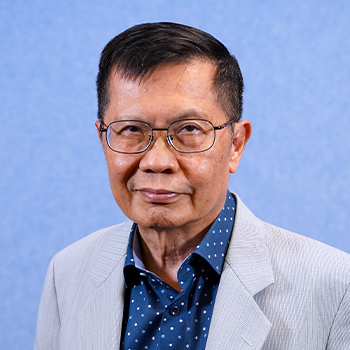By DAVID WALTER
Ubon Ratchathani, Thailand
Bangkok’s splashy, costly subsidy scheme has been ineffective at helping poor farmers.
Ask farmers in the village of Ban Laitung what they think of the Thai government’s rice subsidy scheme, and they tell you that actually, please, they’d prefer it if Prime Minister Yingluck Shinawatra stopped buying up rice harvests at prices 50% above market levels. In this corner of Isaan—Thailand’s poor northeastern region—Ms. Yingluck’s “rural development” scheme has not significantly improved residents’ lives.
“The debt should have been used to help Isaan,” says villager Kamlai Thongsou of the $4.4 billion the Thai government spent last crop year on the subsidy scheme. “We need water systems, irrigation.” His friend Kongsoon Chamram agrees. “Grassroots farmers get nothing from this scheme. Middle and rich farmers benefit.”
The discontent in Ban Laitung hints at an overlooked dimension of Ms. Yingluck’s contentious rice subsidy: its spotty record of helping Thailand’s poorest farmers.
So far most criticism of Thailand’s rice scheme has focused on its flawed economic logic. Ms. Yingluck originally said that Thailand would recoup the cost of its above-market rice purchases by engineering a global supply crunch. By holding the government’s rice stocks back from the world export market, she said, Thailand could jack up world rice prices to the desired break-even level.
Instead, and inevitably, rice dealers from other countries ramped up their exports. Thai exports fell 44% last year, while world rice prices remained flat. The Thai government now holds 17 million tons of moldering rice that it cannot sell except at a steep loss.
While valid, this line of criticism somewhat misses the point. The rice scheme was not primarily an economic program but a political gambit. Ahead of the 2011 elections, Ms. Yingluck used the scheme to signal to voters that she would continue her brother Thaksin Shinawatra’s rural populism.
As prime minister from 2001 to 2006, Mr. Thaksin won a loyal base in Isaan by bringing subsidized health care, housing and village loans to the countryside. His sister now enjoys 80% approval ratings in a region home to one third of Thai citizens.
In this context the best way to challenge Ms. Yingluck’s rice subsidy is to point out that the scheme often contradicts the prime minister’s stated desire to rescue Thailand’s rural poor. For starters, the rice scheme does nothing to help subsistence farmers in less-developed regions like Isaan, where the majority of rice is grown for survival rather than for the market.
Sang and Sompak Laosan are two such subsistence farmers. I meet them by the side of a highway as they plant rice seedlings on land flooded by road runoff. Their own hectare of paddy is too parched for planting, Mrs. Sompak explains. Rainfall is scarce this year and 90% of Isaan cropland lacks irrigation. And so the couple takes their chances on land owned by the Thai highway authority.
Selling rice to the government is out of the question, Mrs. Sompak says, so the rice scheme will pass her by. She will count herself fortunate if she can grow enough to feed her family in the coming year.
Noting the Thai rice scheme’s exclusion of subsistence farmers, last year a World Bank report argued that the government could better serve its rural poor by making targeted (and cheaper) investments in infrastructure and crop research.
Even farmers who have participated in the rice subsidy program say they are ill-served by it. In June, farmers’ groups threatened mass protests after the Thai government proposed cuts to rice subsidies in the face of mounting fiscal losses. (The government soon relented.) The farmers’ central grievance was that as the price at which rice is purchased skyrocketed, so did growing costs.
These farmers, most hailing from Thailand’s more prosperous, irrigated central growing regions, rushed to expand rice cultivation after the government began its unlimited rice purchases. Demand for land and agricultural inputs surged. As a result, the price farmers pay to rent crop land in the region doubled, and pesticide and fertilizer prices rose 20%.
When the subsidy is eventually scaled back—as it must be, Ms. Yingluck acknowledges, given the scheme’s high costs—”the marginal farmers will suffer” until input prices fall back to normal levels, says Nipon Poapongsakorn, an agricultural economist with Thailand Development Research Institute.
For rural Thais who choose to stay on the land, “the only future is large-scale farms,” Mr. Nipon says. For smaller landholders to make a decent living, they will have to form cooperatives that lower the cost of growing and marketing premium crops.
Ban Laitung village is a case study in how the Thai rice scheme has crowded out the private enterprise that could accomplish that transition. The villages’ residents are members of a co-op called the Progressive Farmers Association, or PFA. The co-op has helped 600 Isaan households sell certified organic jasmine rice to overseas buyers.
In past years, farmers in Ban Laitung were able to sell their organic rice for 17,000 baht ($549) per ton to Montri Kosanlawat, who oversees PFA’s rice processing and export deals. Today, however, the government offers farmers 20,000 baht for jasmine rice regardless of quality. To keep his partner villages from abandoning organic farming, Mr. Montri decided to match and then exceed the government price.
But he can no longer turn a profit, and foreign buyers have reacted to his price increases with a 50% reduction in orders. If the rice scheme continues for the next few years, Mr. Montri says, he’ll have to close up shop.
Mr. Walter is the Princeton in Asia fellow at the Journal’s editorial page in Hong Kong.
____________________________________________________________
First published in Wall Street Journal, 25th July 2013,

